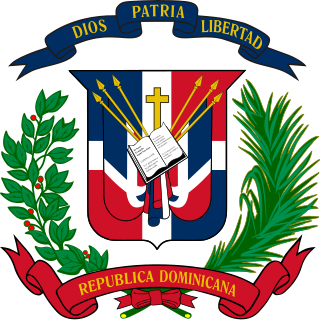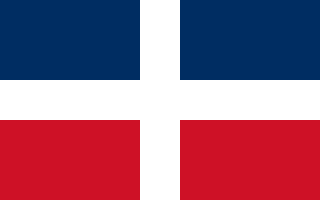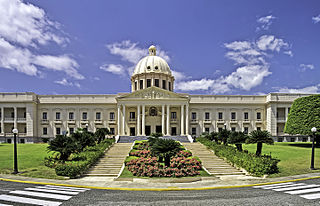 W
WThe Armed Forces of the Dominican Republic is the combined national military of the Dominican Republic. It consists of approximately 44,000 active duty personnel, approximately 60 percent of which are utilized mainly for non-military operations, including security providers for government-owned non-military facilities, toll security, forestry workers and other state enterprises, and personal security for ministers, congressmen, etc. The president is the commander in chief for the military and the Ministry of Defense is the chief managing body of the armed forces. The primary missions are to defend the nation and protect the territorial integrity of the country. The Dominican Republic's military is second in size to Cuba's in the Caribbean.
 W
WThe Dominican national identity card is a polycarbonate card containing the holder's full name, city of birth, nationality, sex, date of birth, civil status, occupation, polling station, and residential address, as well as a photograph that adheres to ISO/IEC 19794-5. The card can also optionally include the holder's blood type. Formerly, it included the holder's race.
 W
WThe Chamber of Deputies is the lower chamber of the Congress which, along with the Senate, composes the legislature of the Dominican Republic.
 W
WThe Congress of the Dominican Republic is the bicameral legislature of the government of the Dominican Republic, consisting of two houses, the Senate and the Chamber of Deputies. Both senators and deputies are chosen through direct election. There are no term limits for either chamber.
 W
WThe Dominican Republic has gone through 39 constitutions, more than any other country, since its independence in 1844. This statistic is a somewhat deceiving indicator of political stability, however, because of the Dominican practice of promulgating a new constitution whenever an amendment was ratified. Although technically different from each other in some particular provisions, most new constitutions contained in reality only minor modifications of those previously in effect. Sweeping constitutional innovations were actually relatively rare.
 W
WThe Economic and Social Council of the Dominican Republic is an advisory entity permanently ascribed to the Executive Branch of the Government of the Dominican Republic. It is responsible for advising the government on economic, social, and labor matters with a goal to construct and strengthen social peace.
 W
WThe First Republic of the Dominican Republic began on November 6, 1844 with the proclamation of the first Constitution, and culminated on March 18, 1861 with the annexation of the country to Spain. During these 17 years, with a fragile State and under constant threat of Haitian invasions, there were 8 governments.
 W
WThe judiciary is one of the three branches of state that make up the government of the Dominican Republic. Its function is to administer justice, for free, to decide on disputes between individuals or corporations, private or public, in every type of process, judgment and execution of judgment. They exercise for the courts and tribunals established by the Constitution and the law
 W
WThe National Council of the Magistracy, is the Dominican constitutional body responsible for appointing judges of the Supreme Court, the Constitutional Court and the Superior Electoral Court of the Dominican Republic.
 W
WThe National Palace is a building in Santo Domingo, that houses the offices of the Executive Branch of the Dominican Republic.
 W
WThe President of the Dominican Republic is both the head of state and head of government of the Dominican Republic. The presidential system was established in 1844, following the proclamation of the republic during the Dominican War of Independence. The President of the Dominican Republic is styled Your Excellency, Mr. President during his time in office. His official residence is the National Palace.
 W
WThe Second Republic of the Dominican Republic began with the restoration of the country in 1865 and culminated with the American intervention in 1916.
 W
WThe Senate of the Dominican Republic is the upper legislative chamber in the bicameral legislature of the Dominican Republic, and together with the Chamber of Deputies makes up the Congress.
 W
WThe Supreme Court of the Dominican Republic is the highest court existing in the Republic and is, therefore, the head of the judiciary in the country.
 W
WThe Third Republic of the Dominican Republic covers from July 12, 1924 with the departure of US troops after the end of the first US occupation, until April 28, 1965 with the disembarkation of American troops after the start of the April 1965 War and the second American occupation. This period is also known as the Age of Trujillo, because of the strong influence exerted by the Trujillo regime over much of these 41 years.